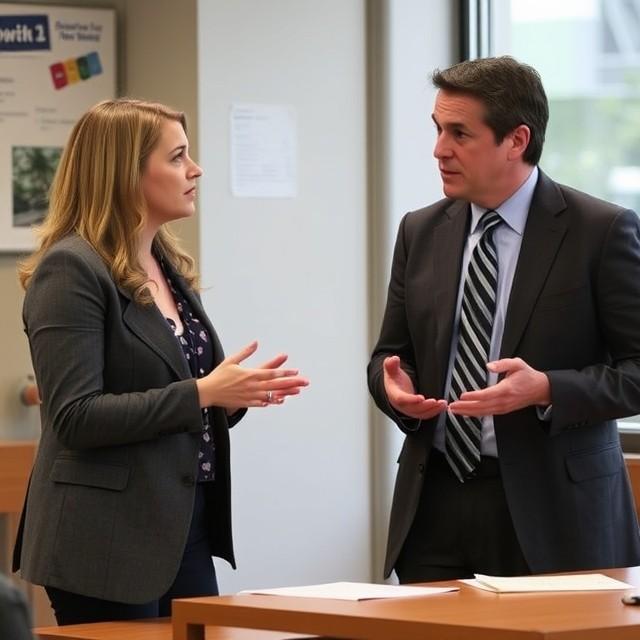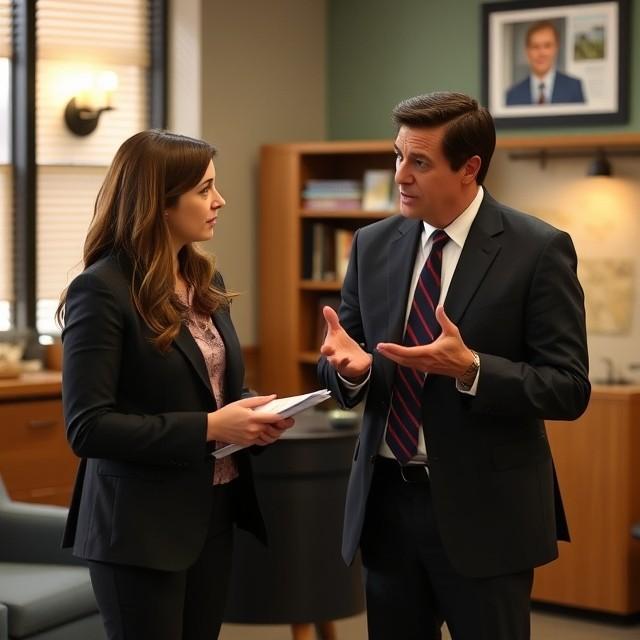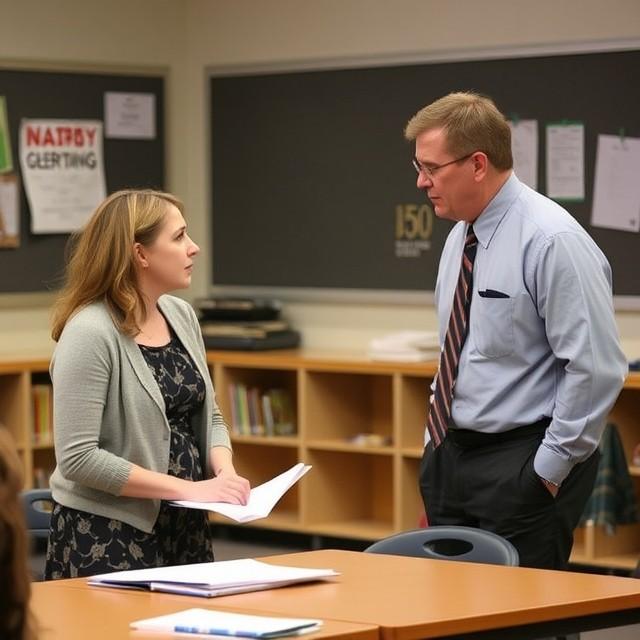Emma Argues with Principal Figgins Over School Policy Change
Have you ever broken a school rule? Emma argues with Principal Figgins—and not just over a small issue, but a major shift in policy. Despite the new school rules without the students being asked about the changes, Emma wasn’t having it. Rather than allow the principal to stumble along as he liked, she took a stand.

Who’s Who: Emma and Principal Figgins
In an endeavour to present the subject matter, permit us to acquainted with the contenders. Emma is highly motivated student who responds to conflict situation with ease especially on issues to do with policy disputes she deems as unjust. She says it when she does not concur.
On the opposite side, we are to consider Principal Figgins; he is an administrator whose duty is to enforce the rules. Figgins is a leader who takes dictation rather than audiences, who makes decisions that may be for the best of all students and staff members at the school even if they do not necessarily approve of those decisions.
What Sparked the Argument?

So, what led to Emma arguing with Principal Figgins? The issue was a series of new school policies, including a stricter dress code and revised schedules, announced without any student input. Emma wasn’t thrilled about these changes.
“Why weren’t students consulted before these decisions?” Emma demanded. “We’re the ones who have to follow these rules, so shouldn’t we get a say?”
The Argument Escalates: Emma vs. Principal Figgins

When Emma was disobliging with Principal Figgins, she assured him that she wouldn’t surrender. Her main argument was that students should be able to make their contributions regarding issues that directly affect them. Emma argues with Principal Figgins because she believes that when rules are enforced, students should be part of the conversation.
Principal Figgins, however, justified the policies saying that they were inclined to make things fair and put order. “These are changes for everyone’s benefit,” he said notably calling for order and bureaucracy.
The tension was palpable. Whereas Emma was struggling for the company’s integration, Figgins remained consistent in the relevance of the new rules.
Who’s Right? Let’s Break It Down

Emma’s Argument:
The idea that Emma has to put forward could not be declared more obvious. Students are the ones who suffer the brunt of these rules every single day. Emma argues with Principal Figgins because she believes students should be heard before decisions are made, especially when those decisions affect their everyday lives.

Principal Figgin’s Argument:
On the other hand, Figgins is equally as right. It is important to note that rules do make a firm academic climate necessary to foster student achievement. Leadership entails making decisions that are fair in nature a fact that means sometimes he goes against what some students want.
The Outcome: Did Anything Change?

While Emma argues with Principal Figgins, it’s clear the debate didn’t end with a winner. But it did result in something greater. Figgins said he would be willing to sit down with some students to further address the issues. It was not the kind of change that Emma expected at the initial instance of the idea but it paved the way for more student participation in future.
What Does This Mean for Schools?
This confrontation between Emma and Principal Figgins is not only abstracted around one set of policies, but it is also a variable discussion on the student and voice perspective of education. Emma argues with Principal Figgins because she believes that schools should not only set rules but also listen to the people affected by them: the students.
Final Thoughts: Is Student Voice Important?
Was Emma right to argue with Principal Figgins? Absolutely. The common factor in all the cases discussed is that the student’s participation in planning improves the result for everyone. The question remains: should schools increase more and more their student’s participation in policymaking? Emma argues with Principal Figgins because she believes students deserve that opportunity.
Key Takeaways:
- Emma Argues with Principal Figgins About Student Involvement: Emma argues with Principal Figgins because students deserve a voice in decisions that affect their education. Her stance shows why a student must be involved in policy administration not just to accept policies but also to conform.
- Balancing Rules with Student Input: While rules are necessary, Emma argues with Principal Figgins that they should be shaped with student feedback. Enshriver maintains that while formulating policies it is only wise to search for balance between rigidity and flexibility as this results to more relevance and compliance.
- The Power of Speaking Up: Emma argues with Principal Figgins, showing that speaking out can spark change. Hiding a stance from authority often feels rather awkward and yet, this is how the process of change starts.
- One Voice Can Make a Difference: Even though Emma argues with Principal Figgins and policies didn’t change right away, her argument sparked conversation. It illustrates the importance of had been saying and campaigning to create future changes for society.
- A Growing Movement for Student Agency: Emma argues with Principal Figgins, reflecting a larger push for more student involvement in school governance. The student population throughout the nation is calling for their input when it comes to decisions that are made regarding them.
- Dialogue Fuels Progress: While Emma argues with Principal Figgins, it proves that ongoing dialogue between students and administrators is crucial. The world isn’t changed in a day, but such discussions can contribute to better perceptions.
What do you think? How big a role should students play in decisions within schools? Let’s hear from you – please answer in the comments section below!
Also, Learn more blog articles on techwitter!

